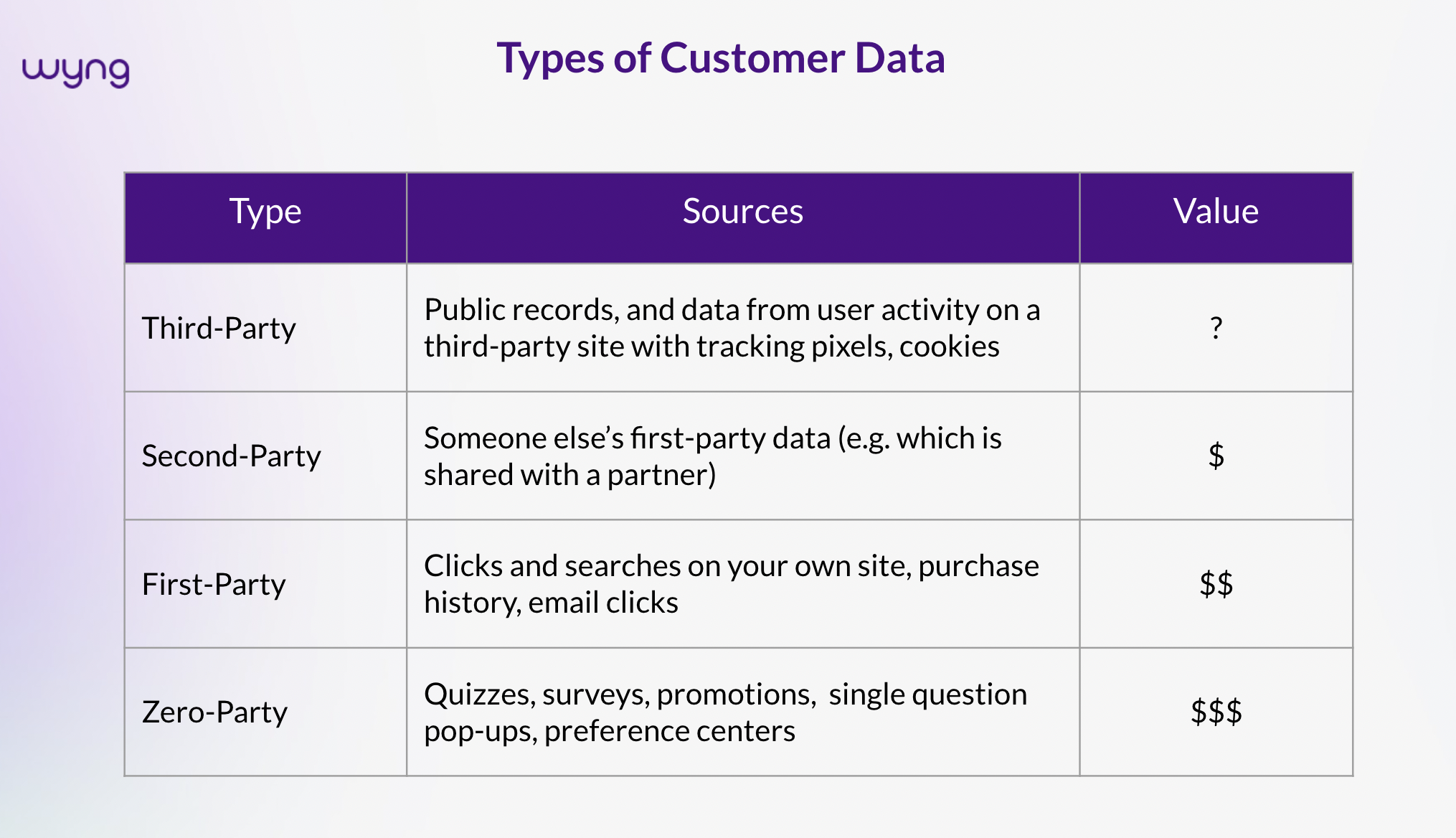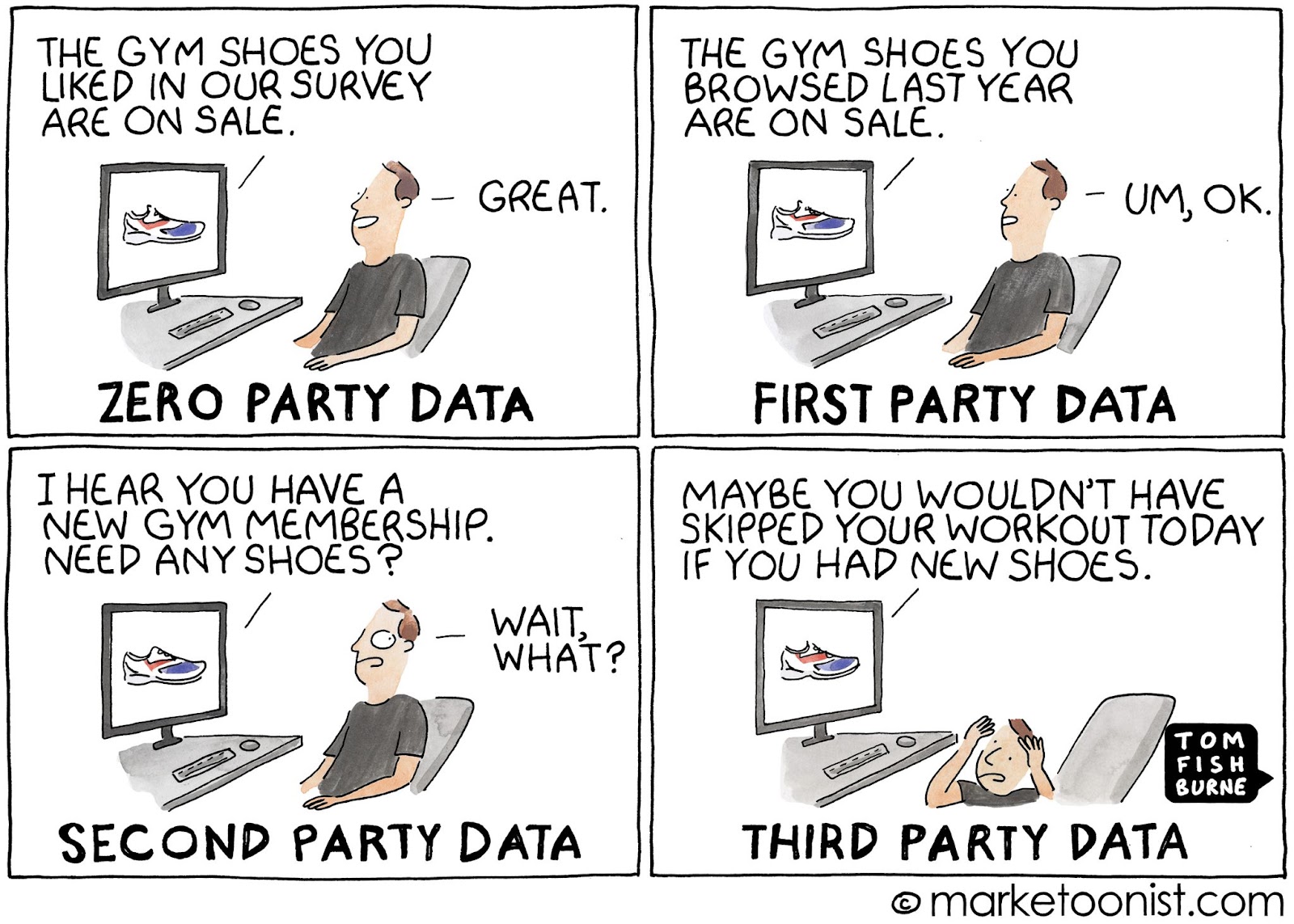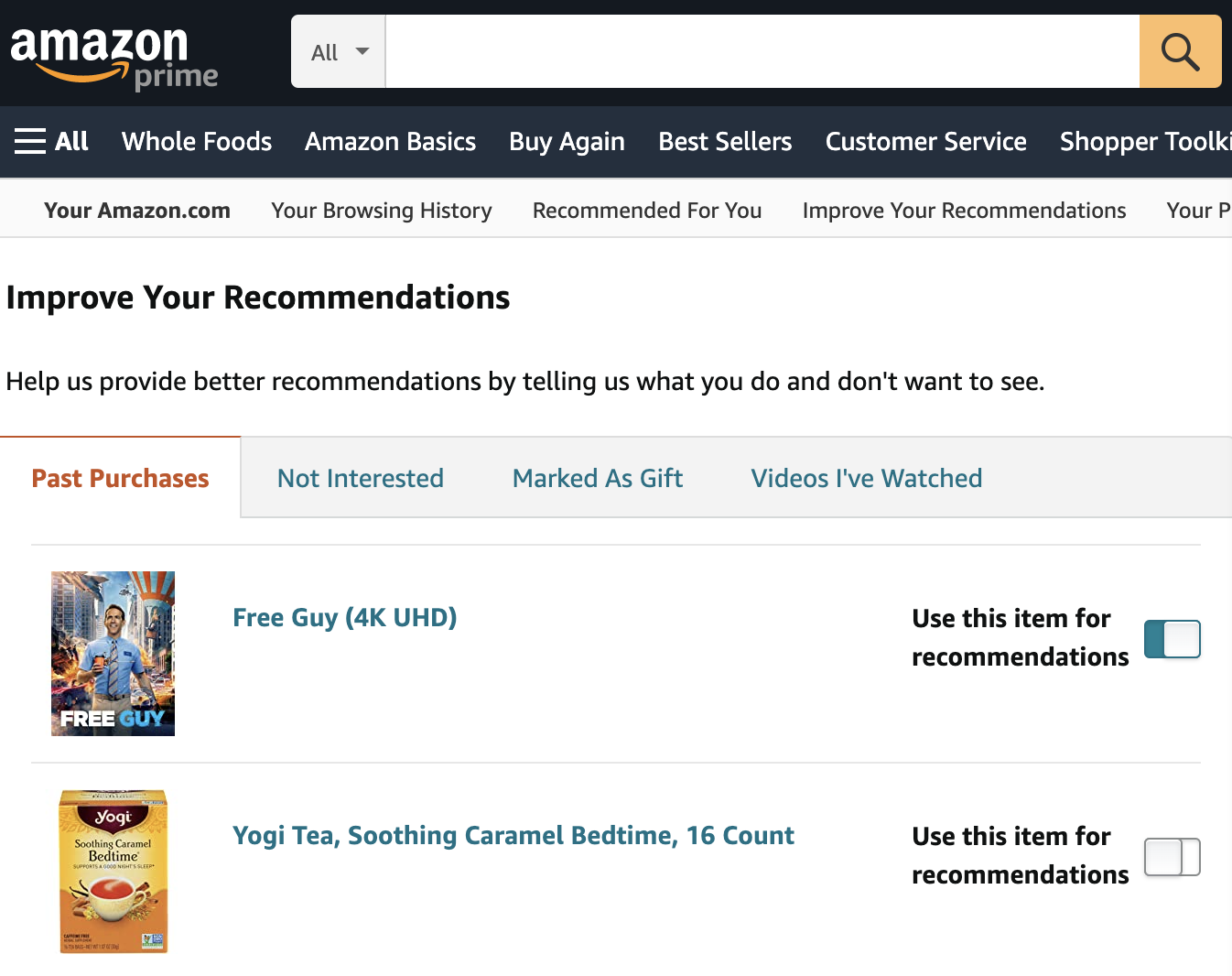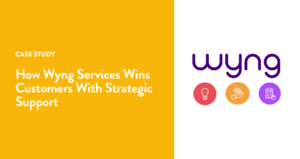Data capture today means a brand has a substantial amount of customer data collected from a wide variety of sources. This data is simultaneously a critical asset and a potential liability, thanks to new data privacy laws. So it is critical that brands understand the origins and implications of their data collection so they can use it ethically and effectively to build customer trust.
Data Types by Source
The easiest way to classify and prioritize customer data is by the source. Today, customer data is classified in four types by source, or “party,” that it comes from. This chart shows important distinctions of each.
Third-Party Data
Third-party data is customer data that is observed, collected, organized, analyzed, referenced, and sold by data vendors online — primarily to be used for ad targeting purposes or by brands to further enrich their own data. This source is also often anonymized these days as consumer privacy legislation and penalties are showing up more and more often around the world.
Background
The main sources of third-party data are the big tech names you are familiar with: Google, Meta, Apple, Amazon, and more. Meta uses member behavior tracked across the internet to sell targeted ads to brands, political parties, and everyone in between. Other vendors aggregate data from many websites and other sources and sell it directly to brands or to match their data with a brand’s advertising goals so their ads are served to the most relevant audiences.
One of the main challenges of observed data, and third–party data in particular is accuracy.One academic study found that leading third-party data sets were less accurate than a random guess on critical customer attributes such as gender and age. Consequently, recent data show that only 12 percent of B2B executives have high confidence in third-party data.
Implications of third-party data in a privacy-first world
Being distinguished as the “hotdog meat of data” by Morning Brew should tell you everything you need to know about where third-party data is headed. It’s been a key driver in most data strategies and marketing technologies over the last decade or two, mainly because it was easy to gather and monetize. Today, third-party data is the subject of most privacy legislation and legal action.
Increasingly, the world of third-party data is undergoing a seismic shift as Apple, Mozilla, and soon Google are each banning the practice of cookie tracking user behavior across websites. While most brands currently use third-party data, these shifts are forcing a new approach to serving ads to customers without using questionable data sources, such as contextual ads.
Second-Party Data
Second-party data is data observed or collected by another brand.
Implications of second-party data in a privacy-first world
More and more brands are forming partnerships and collaborations to sell and share data about their own customers’ behaviors with other brands. Like third-party data, second-party data is currently undergoing an upheaval of its own.
Many privacy protection laws and customer preferences are shifting to bar brands from selling or sharing customer data unless given explicit permission to do so. There are organizations like Global Privacy Control out there helping consumers automate and improve this process and meet the new privacy standards, such as GDPR and CCPA.
First-Party Data
First-party data is data observed directly by a brand and takes place on that brand’s property. First-party data has been around for quite some time. In the days before the internet, this data most often included purchase history or information shared during interactions, such as support calls or surveys. Today, first-party data is collected through website browsing, searches, clicks, product usage, and dozens of other ways customers interact with brands digitally.
Implications of first-party data in a privacy-first world
Leaders in tech like Google, Meta, Netflix, Amazon, and Apple continue to be a dominant force because their first-party data is nearly endless. These industry leaders are sitting on gigabytes of data to deliver better customer experiences without the brands needing to worry about compliance issues or collecting data via outside sources because they have so much activity on the digital properties they own.
However, the game isn’t over yet! For everyone else, there is a wide variety of first-party data by industry. For example, traditionally “data-rich” industries, like travel and hospitality, will collect a ton of information about behavior and booking activity.
“Data-poor” industries, like CPG, typically have limited interaction with customers as their products are sold through grocery stores or big box retailers — and therefore get almost no first-party data to use to deliver better product recommendations or advertisements. Some brands are finding success by reaching out to customers directly through more interactive campaigns designed to gather customer data to provide personalized experiences — even when the customer buys through a distributor or other channel.
Zero-Party Data
Zero-party data (ZPD) is information a customer intentionally gives to a brand about themselves. It is most often in the form of directly asking preferences via a quiz, preference center, survey, single question pop-up, or otherwise text-based form.
Implications of zero-party data in a privacy-first world
Though some view zero-party data as a flavor of first-party data, the distinction between the two is important. If a customer is browsing Amazon for a new pair of gloves, they may click on several waterproof products but ultimately decide not to purchase. Armed with this first-party data, Amazon is likely to send this customer more recommendations similar to the ones already viewed.
However, with zero-party data, Amazon could ask the customer what kind of gloves they were looking for and for what purpose (in this case, let’s say skiing) The customer’s response can be used to target the customer with better recommendations. This ultimately provides a better customer experience by suggesting the most well-reviewed skiing gloves for toddlers.
Another tech leader uses zero-party data in highly efficient ways. Although Netflix has access to a customer’s viewing history (first-party data), they don’t know which films or TV shows customers particularly enjoyed. To obtain this priceless information, they rely on zero-party data volunteered by the viewer — in this case, clicking the small thumbs-up or thumbs-down icon on their screen. This declared preference data is more valuable to their recommendation engines than data collected by any other source.
Zero-Party Data To Build Revenue & Trust
Today, first-party data feeds much of the algorithms used by tech leaders — think of every “recommended for you” product or show you see online that seems just a little off. But zero-party data represents a unique opportunity to restore trust in brands and deliver better customer experiences more efficiently.
Innovators like Amazon are even giving customers transparency and control over behavioral and transactional data sets, thereby transforming first-party data and assumptions into reliable, valuable zero-party data in clever ways.
Here’s an example from Amazon where they ask if you want to use a movie you watched to drive future recommendations.
Using zero-party data means less time and money wasted in understanding and interpreting disparate signals in observed user data. Most importantly, providing transparency, choice, and control to customers with their own data has proven to restore critical user trust.
To learn more about how to collect and use zero-party data, read our step-by-step guide. Or, contact Wyng today for a demo of our zero-party data platform.










